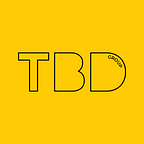Your ultimate guide to collaborating and partnering.
Collaboration and partnering can be the key to turning an ok year into a superb one. Economically speaking, it’s almost a necessity to get right now while things (hopefully) start chugging along again — just ask Adidas.
I have collaborated with many different entities at TBD since it began five years ago. Doing so enabled me to create experiences for people that wouldn't have been possible, build the brand and generally up the level on everything. Collaborating well isn’t easy, but it’s not impossible and doesn’t need to be difficult either. I have a few rules when it comes to collaborating that I haven’t ever shared…until now.
Firstly, be specific and be clear. You are two parties coming together, and there is a give and a get. Spell it out for both sides, and, personally, I always overegg what they get over what I get. Far from a power play, this is simply a reflection of the partnership and the journey you go on together — one side will always get more, whether it’s stated or just happens as a result of circumstances beyond your control. The key is to work upfront to discuss what will happen, when and by whom. I will preface all this with the ‘no spring chicken but not dead yet either’ warning, I have built up things I can leverage that makes all this easier, but everyone has value they can utilise.
Secondly, be honest about money. Paying something can often turn a maybe into a ‘yes, and…’ situation. Collaboration and partnerships don’t have to be devoid of financial elements. Nor should either party be unclear on what the other is putting in, not just the work to be done. Pay attention to nonverbal cues, ask clarifying questions, and avoid interrupting or dismissing someone’s ideas.
Thirdly, set smart goals, and measure success before the end of the project. Decide these with your partner, not just for yourself. The key is to be adaptable. Collaboration can be unpredictable, and plans often change. Stay flexible and adaptable, and pivot when necessary to meet new challenges and opportunities.
Fourthly, over-deliver if you can. There are lots of ways to overdeliver. Numbers, extra services, bonuses, LinkedIn recommendations, the world is your oyster. Not only is this a great habit to get into, but it’s just good behaviour and the right thing to put out into the world.
Finally, conduct a RECON meeting after the partnership is concluded. A RECON meeting is a sales technique I learnt at Sandler that I have taken forward into partnerships and collaborations. The idea is that you have a meeting where you remember why they worked with you, then you evaluate what happened (warts and all), then find out what’s changed since collaborating or partnering (get specifics, dig deep), find out if there are any opportunities to work together in the future or in different ways, and finally, wrap it up by agreeing on what should, can or will happen next.
Expect rejection, some people need money in the bank right now and can’t see the wood for the trees, and that’s ok. There is a certain amount of faith and leaping involved with partnering and collaborating, but hopefully, you can see that there are processes and strategies to manage expectations, fears and uncertainty.
— — — — — — — — — — — — — — — — — — — — — — — — — — — — — — — — — — — — — —
What’s your top tip when partnering or collaborating? Let me know below or email me paul@hereforth.com
